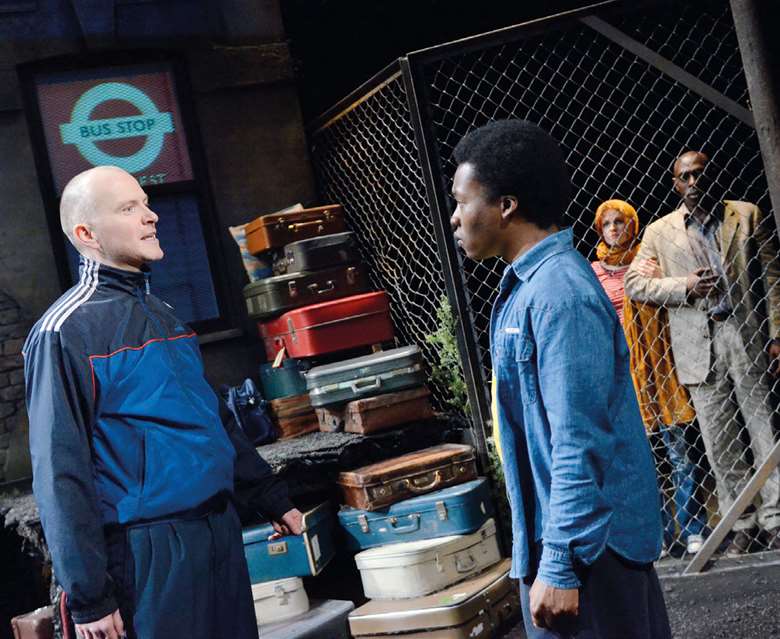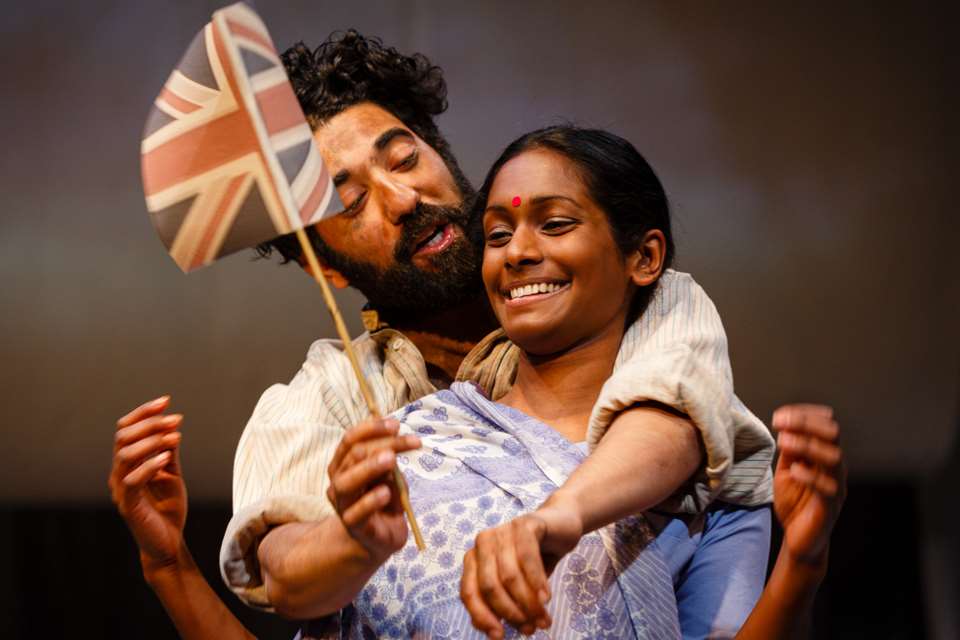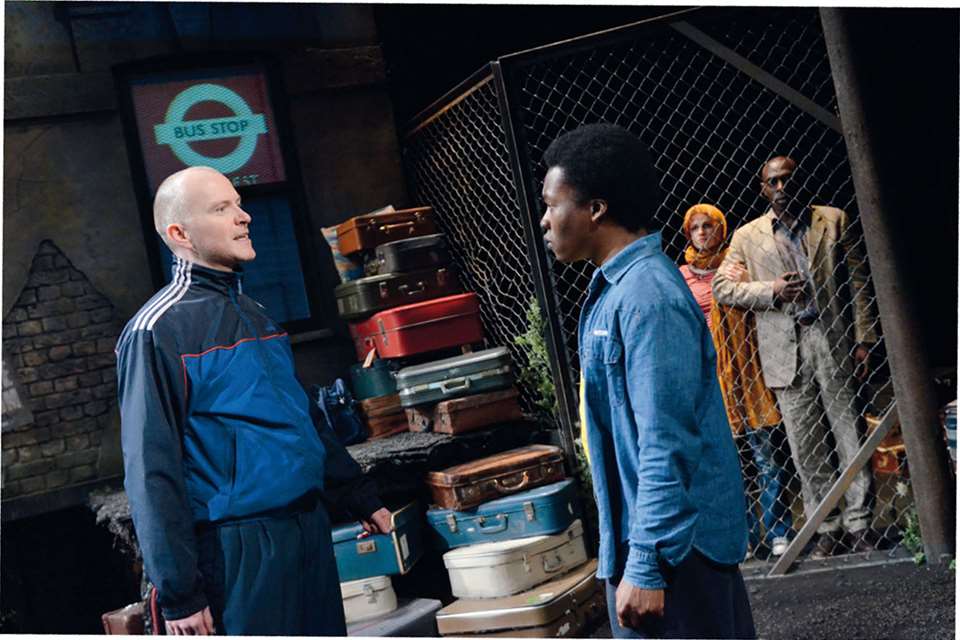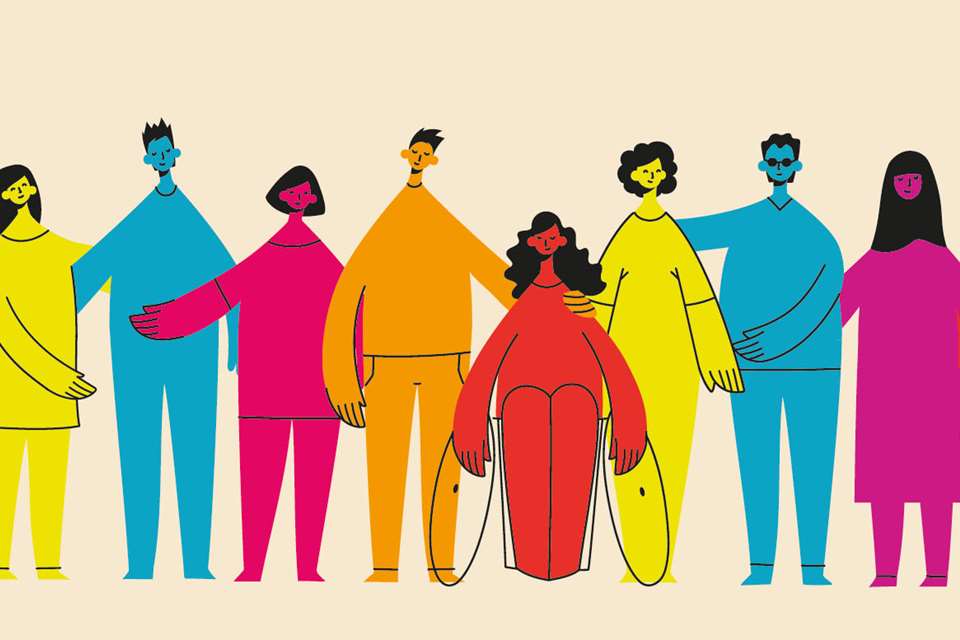Refugee Boy by Lemn Sissay
Lemn Sissay, Lynette Goddard
Saturday, October 1, 2022
Each issue of D&T we bring you a teacher or academic's guide to a play for study with your students. This issue, Lynette Goddard introduces Lemn Sissay's Refugee Boy

KEITH PATTISON
Benjamin Zephaniah's novel was initially written for teenage audiences in 2001, followed by an adaptation to stage in 2013 by author Lemn Sissay. It was was first performed at the West Yorkshire Playhouse (now Leeds Playhouse) in March 2013, before going on a national tour the following year. A subsequent production was staged at the London's Chickenshed Theatre in 2017.
Plot and themes
Contemporary Black plays often foreground social and political concerns. Refugee Boy explores themes about refugees fleeing war and persecution and the legal processes of applying for asylum in the UK, with an emphasis on the experiences of children. The plot centres on the story of Alem Kelo, a 14-year-old boy whose father brings him to Britain to claim asylum because it is not safe for him to remain living in either Ethiopia or Eritrea, where his father and mother are respectively from. Families like Alem's were separated in a border war between the two countries that took place between 1998 and 2000. Alem's parents are thought of as ‘traitors’ to Ethiopia and Eritrea, while Alem is described as a ‘mongrel’ because of his mixed heritage.
The play starts with Alem waking up to find that he has been left alone in a hotel room in Britain, where he is is considered to be an unaccompanied minor. Alem is first taken to a children's home before being placed into foster care with Mr and Mrs Fitzgerald and their daughter Ruth. A key focus of Refugee Boy is on the bureaucratic processes of claiming asylum in the UK, and on Alem's ability to survive these extraordinary circumstances with the support of a community of friends who help him to adjust to life in Britain and campaign on his behalf.
Refugee Boy is structured into 29 scenes set in a range of institutional, home, and outdoor locations. In a contemporary realist style, it features flashback sequences of scenes in Ethiopia and Eritrea, depicting armed soldiers forcing their way into Alem's family home and threatening them by gun point. There is also a further scene of a recorded news broadcast reporting the fatal stabbing of Alem's father.
Explorations of Refugee Boy can focus on how the play increases our understanding of and sympathy towards asylum seeker and refugee experiences. Comparing Zephaniah's novel with the play can examine how Sissay adapts the core themes into theatrical action and strategies. The text unpacks the social care system, bullying, racism, acceptance and activism. Students should be encouraged to recognise the underlying humour in key moments despite the seriousness of Alem's situation.
Characters
Although fictional, the characters in Refugee Boy represent the lives of different groups living in Britain, with asylum seekers and refugees (Alem and Mr Kelo), economic migrants (Mr and Mrs Fitzgerald) and children in care (Mustapha and Sweeney) all depicted. The play shows the different support systems that are available to Alem, especially those that are provided by his foster parents Mr and Mrs Fitzgerald, his foster sister Ruth and his friend Mustapha.
Language
Language is an important element of Black theatre, with playwrights often using culturally inflected accents and speech variations to underline the authenticity of African and Caribbean characters and connect them to their locations and heritages. Benjamin Zephaniah and Lemn Sissay are both poets, which is clear from the style of the language used in the play. Amharic is the language of Ethiopia, which Alem and his father speak at several moments in the play. While translations are given for the Amharic in the written play text, it is important to explore how to make these sentences understandable for English-speaking audiences, either by using verbal translations where lines are repeated in English or by using facial reactions or gestures.
Setting and set design
Contemporary asylum plays are often set in public or institutional spaces and on the streets. Alem finds himself in several temporary spaces: a hotel room, the children's home, the Fitzgerald's home, the courtroom, the bus stop and the street, which is a space of danger and of protest. A versatile set design is needed to accommodate all these settings.
The West Yorkshire Playhouse design used torn wire and piles of suitcases, which call back to the earlier waves of economic migration into Britain, such as the Windrush generation. The Chickenshed Theatre production placed the audience facing each other in a traverse staging configuration that suggested a public gallery in the courtroom; a roundabout in the middle of the stage was transformed into a children's play area, a dining table and a courtroom. Audience members were handed leaflets with information about the rally in aid of Alem Kelo during the campaign scenes, emphasising that refugees face current issues that reach beyond the fictional world of the play.
Resources:
-
Leeds Playhouse resource pack: bit.ly/3SBeyEY
-
My Name is Why? by Lemn Sissay. Canongate Books, 2020: bit.ly/3RlU69Y
-
Refugee Boy by Benjamin Zephaniah. Bloomsbury, 2001: bit.ly/3UJG7xE
Lynette Goddard has taught Drama and Theatre Studies at Royal Holloway, University of London for many years. Their student edition of Refugee Boy can be found at bit.ly/3Eh3zwL






